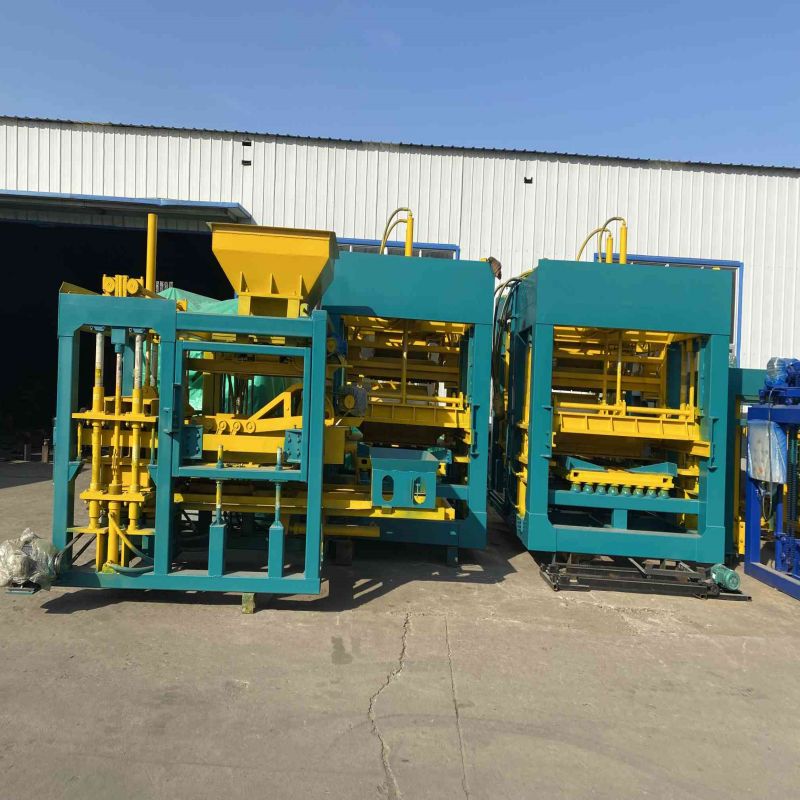
Image source:Aiwei block machine
The construction industry has seen significant technological advancements in recent decades, and one of the key innovations that have transformed the landscape is the hydraulic system used in concrete block machines. These hydraulic systems have greatly enhanced the efficiency and precision of block production, leading to more sustainable construction practices and higher-quality building materials. In this article, we will delve into the intricate world of hydraulic systems in concrete block machines, exploring their functionality, components, advantages, and the pivotal role they play in modern construction.
Introduction
Concrete blocks are fundamental components in construction, serving as the building blocks for a wide range of structures, from residential homes to towering skyscrapers. Traditionally, producing these blocks was a labor-intensive and time-consuming process. However, the advent of hydraulic systems in concrete block machines has revolutionized the industry by streamlining production, improving quality, and reducing labor requirements.
The Basics of Hydraulic Systems
Hydraulic systems are the heart of modern concrete block machines, providing the power and control needed to shape and form concrete into blocks. At their core, hydraulic systems rely on the transmission of force through a fluid medium, typically hydraulic oil or fluid.
Key Components of a Hydraulic System
- Hydraulic Fluid: This is the medium that transfers force within the system. Hydraulic fluid is incompressible, allowing it to transmit force efficiently.
- Reservoir: The reservoir stores the hydraulic fluid. It also helps dissipate heat generated during system operation.
- Pump: The hydraulic pump is responsible for pressurizing the fluid. It draws fluid from the reservoir and sends it into the system at high pressure.
- Valves: Valves control the direction and flow of hydraulic fluid. They can be manually or automatically operated and are crucial for precise control of the system.
- Cylinders: Hydraulic cylinders are the actuators that move various components in the machine. In concrete block machines, cylinders are responsible for compressing the concrete mixture into blocks.
- Hydraulic Motors: In some machines, hydraulic motors are used to drive certain components, providing rotary motion. They are commonly found in conveyor systems and feeders.
How Hydraulic Systems Work
The operation of a hydraulic system in a concrete block machine can be summarized in the following steps:
- Pressurization: The hydraulic pump draws fluid from the reservoir and pressurizes it. This high-pressure fluid is then sent to the hydraulic cylinders.
- Cylinder Actuation: When hydraulic fluid enters the cylinders, it exerts force on a piston or plunger. This force is transmitted to the machine’s components, such as the block mold or compaction mechanism.
- Force Application: The hydraulic cylinders apply a controlled force to the concrete mixture inside the mold, compressing it to form a block. The level of force and duration are precisely controlled to ensure consistent block quality.
- Release and Reset: After block formation, the hydraulic system releases pressure from the cylinders, allowing the newly formed block to be removed from the mold. The system then resets for the next cycle.
Advantages of Hydraulic Systems in Concrete Block Machines
The integration of hydraulic systems in concrete block machines offers a multitude of advantages:
1. Precision Control
Hydraulic systems provide precise control over the application of force. This level of control ensures that concrete blocks are consistently sized, shaped, and compressed, meeting quality standards.
2. Efficiency
Hydraulic systems operate efficiently, transferring power effectively with minimal energy loss. This efficiency contributes to reduced energy consumption in block production.
3. Speed and Productivity
Hydraulic systems enable rapid and repetitive movements, resulting in high production rates. This speed is crucial for meeting the demands of large-scale construction projects.
4. Safety
Hydraulic systems are inherently safe because they operate at low speeds and can handle high forces. Additionally, they are less prone to overheating compared to other systems.
5. Adaptability
Hydraulic systems can be easily adapted to different machine configurations and applications. This adaptability allows for the production of various types and sizes of concrete blocks.
Applications of Hydraulic Systems in Concrete Block Machines
Hydraulic systems are integral to various aspects of concrete block production, including:
- Compaction: Hydraulic cylinders apply force to compress concrete mixtures, forming solid and durable blocks.
- Feeding and Conveying: Hydraulic motors drive conveyor belts and feeders, ensuring a continuous supply of raw materials to the machine.
- Ejection: Hydraulic systems release pressure to facilitate the removal of formed blocks from the mold.
- Curing: Some machines use hydraulic systems to control the curing process, ensuring that blocks gain sufficient strength before being removed.
Conclusion
Hydraulic systems are the unsung heroes behind the efficiency and precision of modern concrete block machines. They have not only revolutionized the production process but have also contributed to the sustainability and quality of construction materials. As technology continues to advance, hydraulic systems will likely become even more sophisticated, further enhancing their role in construction and solidifying their position as a cornerstone of the industry. With their ability to provide efficient, controlled force, hydraulic systems are key to the future of construction, making it faster, more reliable, and more environmentally friendly.
